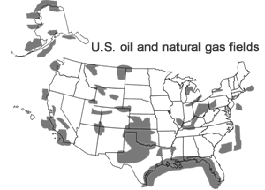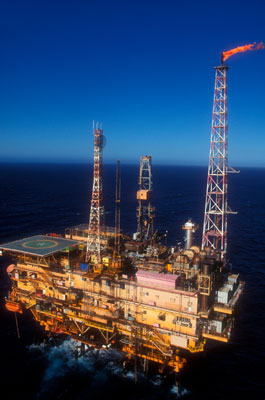What is offshore?

Source: Stock photography (copyrighted)

Source: National Energy Education Development Project (public domain)

Source: National Energy Education Development Project (public domain)
When someone stands at an ocean beach, they are not at the very edge of the United States.
Although it might seem like the ocean is the nation's border, the border is actually 200 miles away from the land. This area around the country is called the Exclusive Economic Zone (EEZ).
In 1983, U.S. President Ronald Reagan claimed the EEZ in the name of the United States. In 1994, all countries were granted an EEZ of 200 miles from their coastline according to the International Law of the Sea.
The ocean floor extends from the beach into the ocean on a continental shelf that gradually descends to a sharp drop, called the continental slope. The width of the U.S. continental shelf varies from 10 miles to 250 miles (16 kilometers to 400 kilometers). The water on the continental shelf is relatively shallow, rarely more than 500 feet to 650 feet (150 meters to 200 meters) deep.
The continental shelf drops off at the continental slope, ending in abyssal plains that are 2 miles to 3 miles (3 kilometers to 5 kilometers) below sea level. Many of the plains are flat, while others have jagged mountain ridges, deep canyons, and valleys. The tops of some of these mountain ridges form islands where they extend above the water.
Several federal government agencies manage the natural resources in the EEZ. The U.S. Department of Interior's Bureau of Ocean Energy Management and the Bureau of Safety and Environmental Enforcement manage the development of offshore energy resources by private companies. These companies lease areas for energy development and pay the federal government royalties on the energy resources they produce from the ocean. Individual states control the waters off their coasts out to 3 miles for most states and between 9 miles and 12 miles for Florida, Texas, and some other states.
Most of the energy the United States gets from the ocean is oil and natural gas from wells drilled on the ocean floor. Other energy sources are also being developed offshore. Wind turbines are located offshore in several countries, and wind energy projects are being considered in several areas off the Atlantic coast of the United States. Wave energy, tidal energy, ocean thermal energy conversion, and methane hydrates are other energy sources currently being explored.





